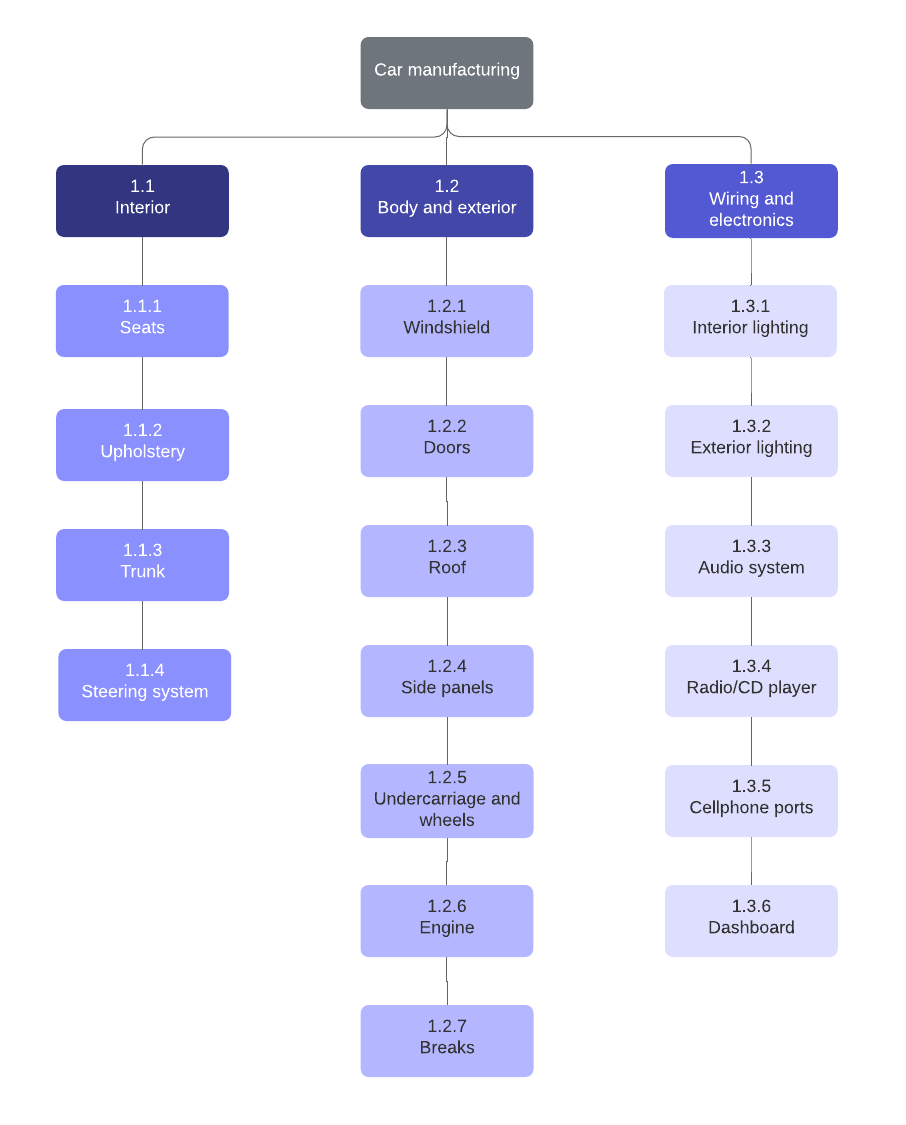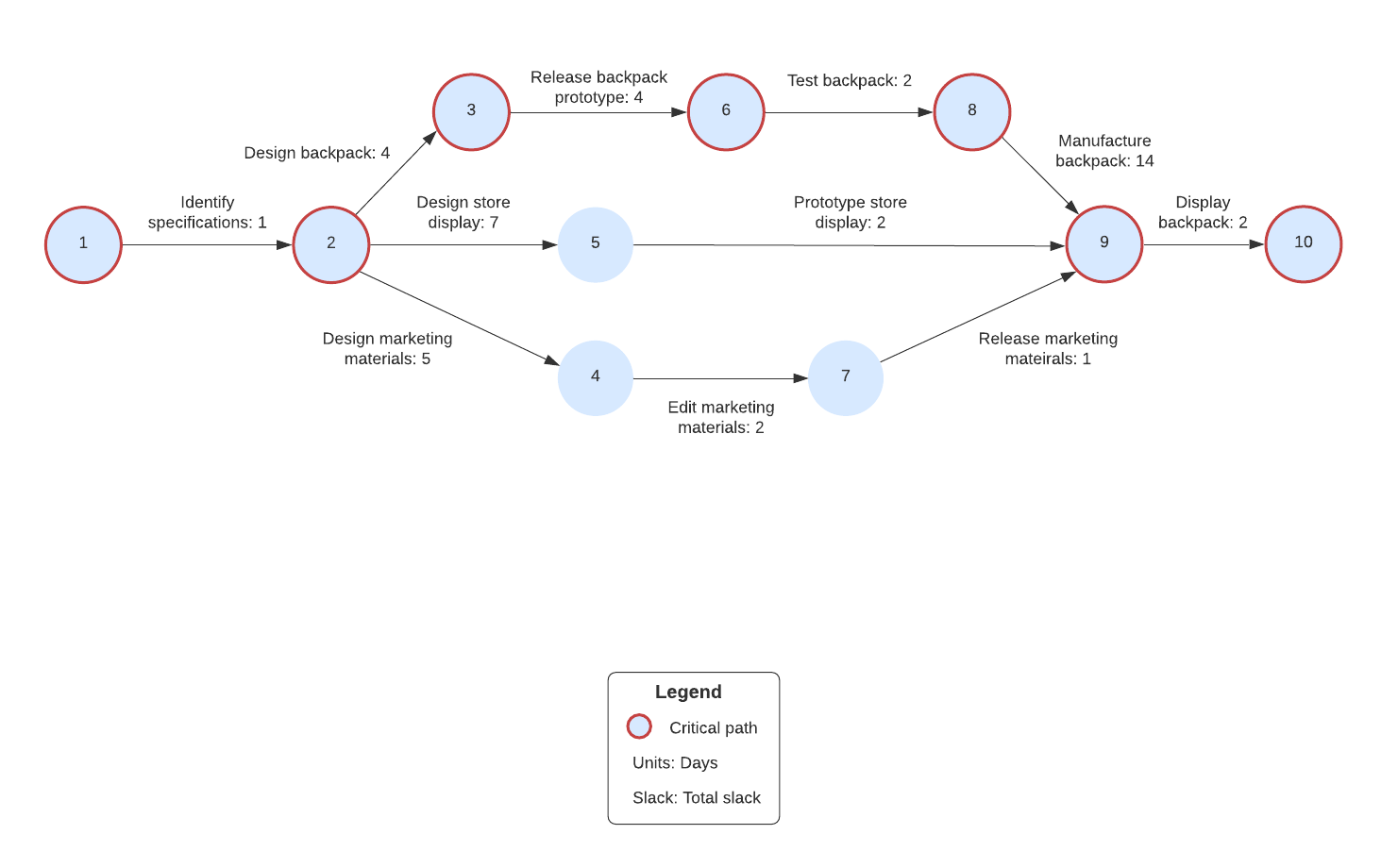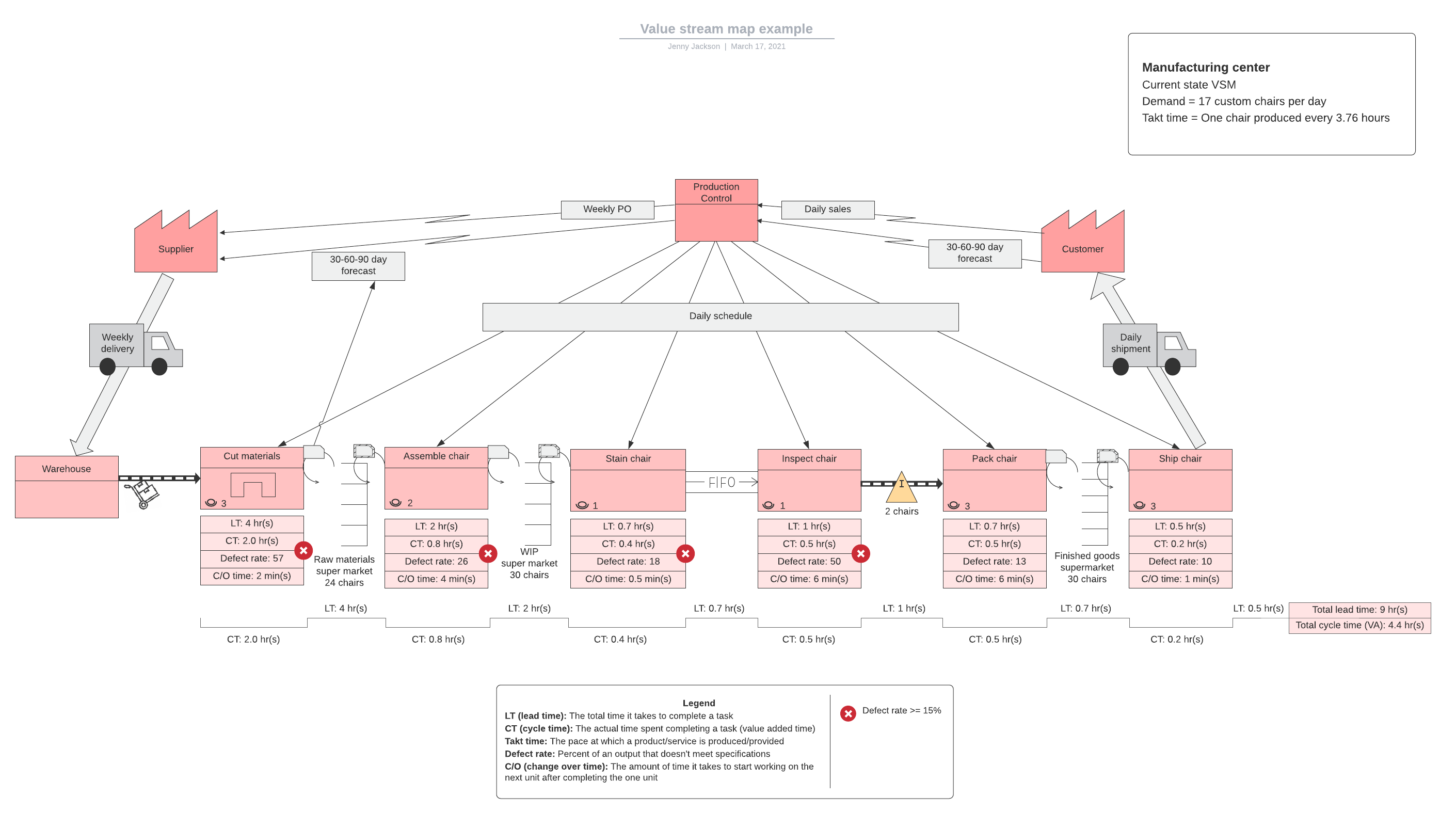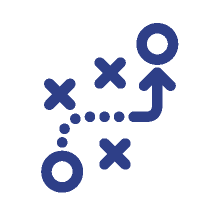
Identifying and managing project constraints
Lucid Content
Reading time: about 7 min
Unless your company has unlimited budget, time, and resources, your project will come with constraints. As a project lead, your job is to determine what those constraints are, how to prioritize them, and how they might impact your project so you can meet stakeholder expectations.
This article discusses some of the constraints you might encounter and what you can do to work around them to keep your project on track.
What are project constraints?
A project constraint is any kind of limitation that can be a risk or have an impact on your project. The various constraints you may encounter are usually interconnected, meaning that a change to one constraint will impact the other constraints.
For example, when you set the deadline for completion and final release, you’ve just given your project a time constraint. Your team is limited by a specified number of days or weeks to complete and deliver the product. In addition to a deadline, you probably have asked for a certain amount of money to complete the project (a budget constraint), and you have decided which features and enhancements will go into this version of the product (a scope constraint).
If you move the deadline to an earlier date, the project scope might be at risk. If you move the deadline to a later date, the project’s budget could be at risk. The scope could also be at risk because when teams perceive that they have more time, they might be tempted to add a feature or two.
The Theory of Constraints and Agile
The Theory of Constraints (TOC) was originally developed by Israeli businessman, Eliyahu M. Goldratt. The central idea is that there will always be at least one component in any system that will constrain or slow down processes. It’s sort of like the old proverb that says, “A chain is only as strong as its weakest link.”
While there will always be a constraint in any given system, you don’t have to let the constraint ruin your business. With TOC, you find ways to make the constraint work for you rather than against you.
For example, if your constraint is an employee, you can fire the employee. But letting an employee go could also become a constraint. You’ll have to bring in a new person who may or may not be able to do the job. Instead, figure out why the employee is the constraint and work to fix the problem through training, distributing tasks, or moving the employee to a different area.
How do you apply TOC to Agile?
Goldratt developed TOC to improve processes related to product manufacturing. But it has also been applied to many different industries, including IT and software development.
Just like in any system, you will find constraints in an Agile environment. Your organization is only as agile as its least agile member. But your organization is more than just the software developers. It includes teams such as HR, finance, marketing, sales, legal, operations, and so on. Constraints can be introduced by any of these members during the development process.
Agile software development teams can usually adapt to and apply TOC to their processes much faster than the business side of the organization. Agile is all about improving and optimizing processes in IT and software development, but it doesn�’t focus on the business divisions.
TOC can help you find business problems that constrain your ability to meet goals. Use the following five steps to identify and fix constraints:
-
Identify the constraint: What is keeping you from meeting your goals?
-
Exploit the constraint: What needs to happen to reduce or eliminate the constraint’s impact on the process?
-
Subordinate and synchronize to the constraint: Make sure that all other parts of the process recognize the constraint and lend support and assist the constraint to reduce its impact.
-
Elevate the constraint: If the constraint persists, it becomes a higher priority that needs to be addressed. Do you need to provide more training? Hire new employees? Update equipment?
-
Repeat as needed: You will need to repeat the process every time a new constraint is introduced into your process.
What are common project constraints?
You may have heard about the three most common constraints: scope, time, and cost. Together, these three constraints are known as the Triple Constraint. You can’t change one of these constraints without impacting the other two. So you need to find a way to balance all three.
When looking at these three constraints, it’s important to understand and keep your business goal in mind.
Scope: The scope should be well documented and clearly communicate what will and won’t be included in the final product to reduce scope creep. The product you deliver depends on its schedule, budget, and available resources to develop it.
A work breakdown structure (WBS) chart is a great visual for breaking the project down into actionable tasks and getting a better understanding of the complete scope.

Time: Set timelines for each iteration. Identify the deadline for final release. The timelines need to be realistic. To create a realistic schedule, look at the resources you have, team member skills, and the amount of time it took to do similar tasks in a past project.
To help you determine realistic timeframes for your project, you might want to use a project evaluation and review technique (PERT) chart. A PERT chart lets you visually map out the time required for each task and dependencies to estimate how long a project might take.

Cost: Every project has a budget. You can estimate what the project will cost by analyzing previous projects. If your resources and time are limited, you will need to adjust the budget to avoid overages. If your budget increases, you might be able to add more people and features to the project while staying within the specified timeframe.
For every project, you need to decide whether scope, time, or cost is most important. Then you need to align the other two constraints to match it. For example, if the deadline is the highest priority and can’t be moved, then time and scope need to be adjusted to reflect what can actually be accomplished within the time constraint.
Other constraints to consider include:
Quality: The quality constraint is closely related to the Triple Constraint. Any change to scope, time, or cost might impact product quality. A change in quality expectations affects the project’s scope, time, and cost. For example, if your project is plagued by scope creep and the time and cost don’t change, the quality will likely suffer.
Making a critical-to-quality tree (CTQ) can help you identify customer needs and expectations.
Risks: Every project comes with risks. To manage risks as a constraint, you need to define a range of responses to potential risks that customers and stakeholders will tolerate. For example, if a risk involves potential equipment failure, what is the tolerance zone for the price of a replacement, the time for equipment delivery, and quality of the replacement?
Perform a risk assessment to help you identify potential risks, determine the likelihood of risks happening, and measure that will be taken to stop the risks.
Benefits: Determine what the project’s value will be. Your projected value helps you to justify costs, resources, scope, and time needed to complete the project. You’ll want to be able to explain the potential benefits to all stakeholders to ensure that you can get what you need to get the job done.
Create a value stream map to provide a visual overview of every step in the development process. This will help you identify areas that don’t add value where constraints might be introduced.

Resources: When planning a project, you need to look at the resources you already have—human availability, skill, and location, available equipment, and so on. This constraint is often tied to costs. You can’t expect the company to hire more people and buy new equipment if the funds are not available.
Customer satisfaction: Delivering your project on time within the scope, time, and cost constraints doesn’t mean customers will like it. Before you start your project, brainstorm ideas and talk to customers to determine what you can deliver that will make them happy.
A customer journey map will help you understand how your customers interact with your products and services. This information helps you to understand what they need and expect from future offerings.

Every project will be different, and it’s not really possible to plan for everything that could go wrong. But when you plan for the likely constraints in your project and the ways you’ll address them, you can more quickly identify and fix problem areas so you can reach your goals.

Find out how you can use Lucidchart to plan your next project.
Learn howAbout Lucidchart
Lucidchart, a cloud-based intelligent diagramming application, is a core component of Lucid Software's Visual Collaboration Suite. This intuitive, cloud-based solution empowers teams to collaborate in real-time to build flowcharts, mockups, UML diagrams, customer journey maps, and more. Lucidchart propels teams forward to build the future faster. Lucid is proud to serve top businesses around the world, including customers such as Google, GE, and NBC Universal, and 99% of the Fortune 500. Lucid partners with industry leaders, including Google, Atlassian, and Microsoft. Since its founding, Lucid has received numerous awards for its products, business, and workplace culture. For more information, visit lucidchart.com.

